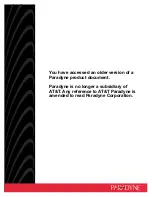
dynamic random−access memory. RAM that stores in capacitors that must be periodically refreshed.
DSU
Data Service Unit. Device used in digital transmission that adapts the physical interface on a DTE device to a
transmission facility such as T1 or E1. The DSU is also responsible for such functions as signal timing. Often
referred to together with CSU, as CSU/DSU.
DTE
data terminal equipment.
Dynamic Random−Access Memory (DRAM)
dynamic random−access memory. RAM that stores information in capacitors that must be periodically
refreshed. Delays can occur because DRAMs are inaccessible to the processor when refreshing their contents.
However, DRAMs are less complex and have greater capacity than SRAMs.
EDO
Extended data output
Electrically Erasable Programmable Read−Only Memory (EEPROM)
electrically erasable programmable read−only memory. EPROM that can be erased using electrical signals
applied to specific pins. See also EPROM.
EMI
Electromagnetic interference
EPROM
erasable programmable read−only memory
ESD
Electrostatic discharge. The rapid discharge of static electricity from one conductor to another of a different
potential.
Extended Industry−Standard Architecture (EISA)
Extended Industry−Standard Architecture. 32−bit bus interface used in PCs, PC−based servers, and some
UNIX workstations and servers.
FDDI
Fiber Distributed Data Interface. LAN standard, defined by ANSI X3T9.5, specifying a 100−Mbps
token−passing network using fiber−optic cable, with transmission distances of up to 2 km. FDDI uses a
dual−ring architecture to provide redundancy.
20614 Cisco Installing and Maintaining Routers Part 4: 12000 GSR Series and XS5032 Modules
11



































